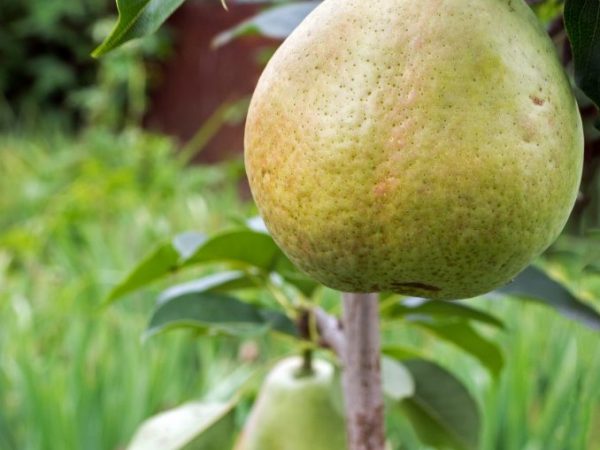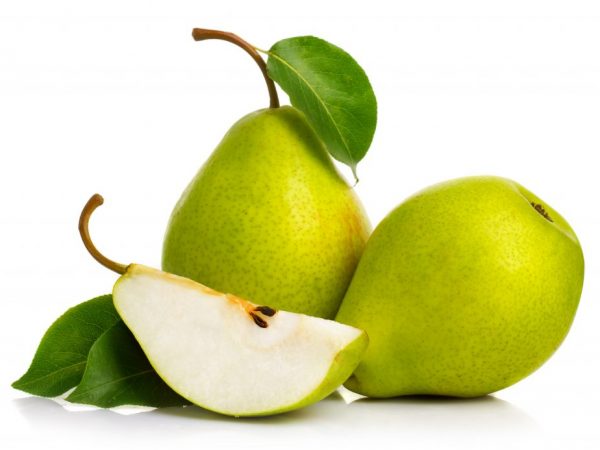The best columnar pears for the Moscow region
Over the past few years, columnar trees have begun to be grown in the Moscow region. The reason for this is the appearance of the plant itself and the fact that in such regions of the country it is important to value even the smallest plots of land. Let's consider what are interesting columnar pears for the Moscow region.

The best columnar pears for the Moscow region
Features of columnar cultures
Columnar trees are compact in appearance. They are often referred to as dwarf cultures. This name of the tree is due to the fact that its shape is similar to a column, that is, the side branches are close to the main trunk. Leaves are green, oval. The description indicates that all varieties of this category are characterized by a rich honey aroma and juiciness of the fruit. They do not need special care, so everyone can plant them in their own garden.
This series is characterized by an unusual appearance, which is why it is often used to decorate a garden or yard. Such pear crops can be summer, winter and autumn. If you want to consume pear fruits for 6-8 months, you need to plant plants on the site that bear fruit in different seasons.
Trees begin to bear fruit in the second year after planting. Excellent yield indicators are noted. In the first few years, you can collect about 50-80 kg of selected products from 1 plant. Over time, 4-5 years after planting, the yield increases several times. Such crops are resistant to negative environmental factors (frost or drought). It should be noted that they have a good immune system in relation to diseases.
Dalikor
This variety is considered early winter. It can often be found in the Moscow region. Harvesting should be in mid-October. If the fruits are stored at the correct temperature (about 8-10 ° C), then they can be stored without loss of taste and marketability for 4-5 months.
The weight of an individual fruit is 500 g. The description indicates that this variety is characterized by a high yield: about 35-40 kg from 1 tree. The outer shell is presented in a light green shade, with a slight red blush. The pulp is juicy, without a watery structure. In the context of a pear of a rich creamy shade. Taste excellent, sweet fruits. Astringency is absent at the genetic level.
Decor
The columnar variety of Decor is ideal for growing in the Moscow region. The fruits begin to ripen at the end of summer. They are juicy, soft. Ideal for baby food. The pulp is tasty, sweet, without astringency. The weight of an individual pear ranges from 200 to 300 g.
Variety characteristics:
- self-pollination
- frost resistance;
- suitable for growing on any soil;
- immunity to molysiosis and sporia.
Carmen

Varieties vary in taste and color
This variety of columnar pear for the Moscow region was bred in Russia. It was obtained as a result of crossing Williams and Blank's daughter. Large fruits can reach a weight of 250 g.The outer shell is presented in a light yellow shade. 40% of the fruit area is covered with a brown blush.
The pulp is firm, not watery. The taste is pleasant, sweet. Among the main disadvantages should be noted low resistance to frost, late ripening (end of October) and low yield. The advantages include such characteristics as undemanding to the soil and planting method, resistance to scab.
Favorite of Academician Yakovlev
This ideal pear variety for the Moscow region was obtained by crossing such varieties as Esperena and Bergamot. This variety is characterized by the possibility of self-pollination. To increase yields, you should plant a crop near its pollinators - Daughter of Blankova and Esperen.
Fruiting begins at the end of summer, 5 years after planting in a permanent place. Excellent yield (about 50 kg per tree) and resistance to low air temperatures are noted. The weight of 1 tasty and juicy fruit is 200-400 g. The surface is characterized by a yellow color, with a slight burgundy blush. The taste is sweet, and the aroma is a bit like quince.
Honey variety
Honey Pear is considered one of the best columnar pear varieties for the Moscow region. The fruits of this culture are rich yellow, without blush and spots. Fruit weight is 400-500 g. The pulp is juicy and pleasant. The taste is sweet. The aroma is typical for pear products.
The tree begins to bear fruit in 3 years after planting in a permanent place. About 80 kg of products can be harvested from 1 tree. Harvesting falls at the beginning of September. The species is characterized by resistance to frost, drought and undemanding soil. The only drawback is that the collected products quickly lose their marketability and taste (they are stored for no longer than 2 months).
Fall dream
This variety belongs to hybrid crops. It was obtained by crossing such varieties as Dikanka and Kopeechka. Ideal for growing in the Moscow region. Such trees are not grown as often as others. This is due to the fact that the fruits of such a plant are small in size. The surface of the pear is covered with small brown spots. The products are used for making jams, juices or other desserts.
Fruiting is observed 5 years after planting. Harvesting is carried out at the end of October. Individual fruits can weigh up to 400 g, but the standard weight is 200-250 g. The taste is pleasant and sweet. The pulp is juicy, but not watery.
Sapphire
This variety ripens at the end of October. The tree begins to bear fruit 3 years after planting. In order for the fruits to reach consumer maturity, they are plucked at the stage of technical ripeness and left in the basement for 15-20 days. You can store products in this condition, without losing taste and presentation, until December.
The weight of the pear is about 300 g. The surface of the fruit is rich yellow. The inner flesh is beige. The taste of pear is rich, sweet, pleasant. The pulp is juicy. This species is not only resistant to sudden changes in temperature, but also to most common diseases.
Severyanka
Severyanka is often found in the gardens of the Moscow region. The tree begins to bear fruit as early as 2 years after planting in a permanent place. It gives an excellent harvest annually (about 60 kg per tree). Harvesting is carried out in late summer or early autumn. The only drawback of such a pear should be considered the fact that it begins to crumble during maturity.
The fruits do not have a pronounced aroma. The taste is sweet, a little sugary. The weight of a pear, on average, is 300 g. The peel is dark yellow, with a slight brown blush, which occupies 30% of the entire area.
Conclusion
By purchasing the best columnar seedlings, you can get a bountiful and tasty harvest. These varieties are resistant to many diseases. Study all the parameters of a particular variety, and only after that make a decision on which one to grow.


